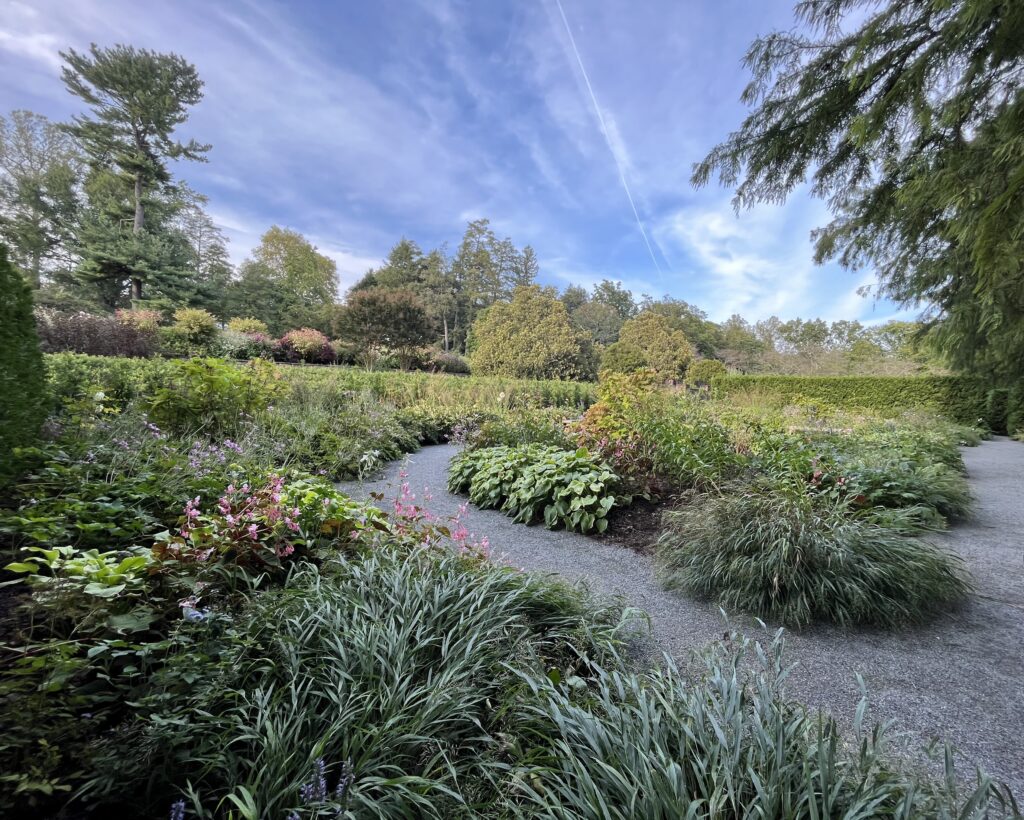A version of this article originally appeared in the Summer 2024 issue of Northern Gardener magazine.
Texture is tactile, right? It’s the way plants feel when we touch them, like the sharp tip of a thorn or the fuzziness of a lamb’s ears leaf. In garden design, though, texture is a visual element as well. Garden texture influences how we perceive a bed from a distance as the different shapes and arrangements of leaves reflect light and shadow. Adding varied textures can make your garden seem larger or cozier or just more exciting. This is why beautifully textured all-green beds still look interesting.

Defining Texture
Garden texture usually refers to leaves, but texture also can come from bark, blooms or the branching habit of a plant. How we experience texture changes with the seasons, too, as different textures emerge or fade. Garden designers usually describe texture three ways.
Coarse or bold textured plants are those with large, prominent leaves that demand visual attention. Tropical plants, such as cannas or elephant ears, have bold texture as do large-leaved hostas or those with prominent swordlike leaves, such as irises. Big blooms, such as those on hydrangeas or hibiscus, create bold texture. From a distance, fine-needled plants such as yews or pines may merge together and appear bold. Coarse or bold textured plants create focal points and they can make a large space feel more intimate. Too many coarse-textured plants may make your garden seem heavy or chaotic.

Fine textured plants are those with smaller leaves arranged more closely together. Think ferns, grasses, dill, Russian sage, threadleaf coreopsis, Amsonia and plants with airy blooms such as Astilbe, Verbena bonariensis and some alliums. If it sways in the wind, it’s probably a fine garden texture. Plants that have variegated leaves or foliage that is lobed appear to have a finer texture. Japanese maples are an example of a fine-textured tree. Fine textured plants can make small space appear larger and provide a lush background to bolder plants.
Medium texture describes most garden plants, and they should make up the majority of the plants in any ornamental bed. Coneflowers, impatiens and many deciduous shrubs are examples of medium-textured plants.
Plants are not the only elements to create textural interest in a garden. A boulder is certainly a bold texture. A turf lawn is considered a fine-textural element. And, outside of the three broad categories of texture, foliage, blooms and stems may be spiky, glossy, ridged, feathery, wrinkly, peeling, downy, metallic and dozens of other descriptors that add interest. This is the texture we see up close and want to touch.
Adding Garden Texture
If you’re not sure about how well the textures of your garden work, here’s an easy way to assess them. Take a digital photo of the bed, then remove all the color to make it a black-and-white shot. (In your photo application, take the color saturation level down to zero.) Without color to distract you, the textures (and plant forms) will be more evident. If the photo looks blotchy, maybe you have too many bold-textured plants. If it looks busy, perhaps too many fine textured plants or just too many plants with the same texture.
Adjusting texture, like so much of garden design, is art as much as science. Like colors in the garden, designers repeat or echo textures to make a garden more cohesive. You can play with texture in the garden by adding containers with bold plants or edge a border with a wispy foliage plant, such as Hakone grass or alyssum.
Texture is just one element of garden design, but if something seems off or lacking in your garden, consider adjusting the garden texture.

Great points and beautiful photos, Mary. I like the idea of looking at a section of the garden in black and white to see the textures. I need to make a note to try this technique in my own garden during the growing season.